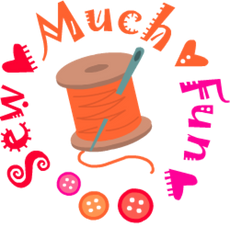ABOUT FABRICS
General Fabric Introduction
There is evidence that humans started wearing clothes between 100,000 and 50,000 years ago but it is not clear whether it was for protection from weather conditions or for magic, cult or decoration.
The materials first used were probably a mass of fibre, tiny, hair-like strands found in vegetation which were then matted together to form a felted non-woven fabric. It was not long until humans developed spinning by drawing out the fibres and adding a twist making a longer and stronger thread and producing a yarn. This could then be knitted or woven together to make fabric.
If we want to understand fabrics we need to know about fibres, where they come from and how they are processed into fabrics, and what makes them so attractive for use in cultures all over the world.
Textile fibre types
We have natural fibres that come from plants and animals and we have man-made fibres that come from natural polymers (vegetable and animal) or synthetic polymers (oil based). There are two different types of fibre that go into the manufacture of fabric.
Staple Fibre: Short strands, high quality staple yarn is longer and finer, lower quality is shorter and coarser.
Filament Fibre: Continuous strands, high quality is finer and stronger as this is mainly man-made fibre it really depends on its final use.
Natural Staple Fibres
Plant (cellulose) fibre
Cotton, Kapok,
Bast (stem) fibre
Flax (Linen), Hemp, Ramie, Kenaf, Nettle, Jute
Leaf fibre
Sisal, Pina, Abaca
Animal (protein) fibre
Wool, Merino, Mohair, Cashmere, Camel Hair, Alpaca/Vicuna
Natural Filament Fibres
Animal (protein) fibre
Silk, Spider silk
Manmade Staple Fibres
Cellulosic staple fibre
Viscose rayon, Lyocell, Tencel
Synthetic staple fibre
Polyester - Virgin (new fibre) and recycled fibre, PET polyester - produced from plastic bottles,
Triextra, Nylon - Virgin (new fibre) and recycled fibre, Acrylic and mod-acrylic
Manmade Filament Fibres
Cellulosic filament fibre
Acetate, Viscose rayon, Lyocell, bamboo rayon, PLA, Soy, Rubber
Synthetic filament fibre
Polyester - Virgin (new fibre) and recycled fibre, PET polyester - produced from plastic bottles,
Triextra, Nylon - Virgin (new fibre) and recycled fibre, Elastane, Metallic, Carbon fibre, Synthetic spider silk
Please note that new raw materials an are being introduced for new fibre production all the time alongside innovative developments of recycling fibres, garments and fabrics.
Over the coming months we will take each fibre group at a time and add more detail and explanation why each fibre gets used, its unique characteristics, how it gets made and what resources it uses. We can then consider what fabrics and products get made from it and how we can contribute to a ‘closed loop’ manufacturing system.



